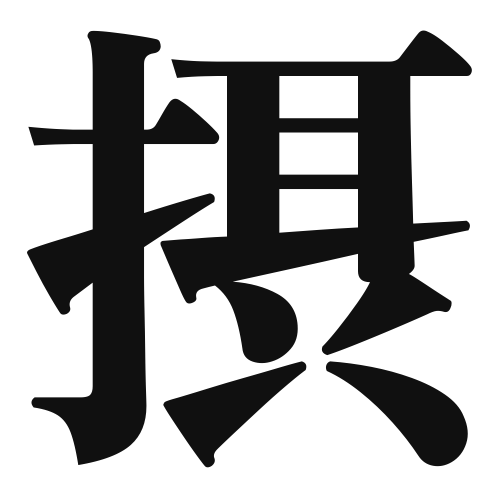1. Overview of Meaning
The kanji “摂” (setsu) generally means “to take in,” “to hold,” or “to control.” It often relates to the idea of managing or overseeing something, such as in the context of governance or care.
2. Formation and Radical
Formation of the Kanji: The kanji “摂” is a compound character (会意文字) that combines elements to convey its meaning. It consists of the radical “手” (hand) which signifies action, and “摂” itself, which relates to the concept of taking or holding.
Radical: The radical of “摂” is “手” (shǒu), which is commonly associated with actions performed by the hand.
3. Examples of Usage
Common Words and Phrases: Some frequently used words that include “摂” are:
- 摂取 (せっしゅ, sesshu) – intake
- 摂政 (せっせい, sessen) – regent
Example Sentences in Daily Conversation:
- 健康のために栄養を摂取することが大切です。
- (It is important to take in nutrients for your health.)
4. Synonyms and Antonyms
Similar Kanji: A similar kanji is “取” (とる, toru), which means “to take” but is more general and does not carry the same connotation of management or control.
Antonyms: An antonym could be “放” (はなす, hanasu), which means “to release” or “to let go,” indicating the opposite action of holding or controlling.
5. Cultural and Historical Background
Relation to Japanese Culture: The kanji “摂” is often used in contexts related to governance and care, reflecting the importance of leadership and responsibility in Japanese culture.
Proverbs and Idioms: One relevant proverb is “摂理” (せつり, seturi), which refers to the natural order or divine providence, emphasizing the idea of overseeing and managing the world around us.
